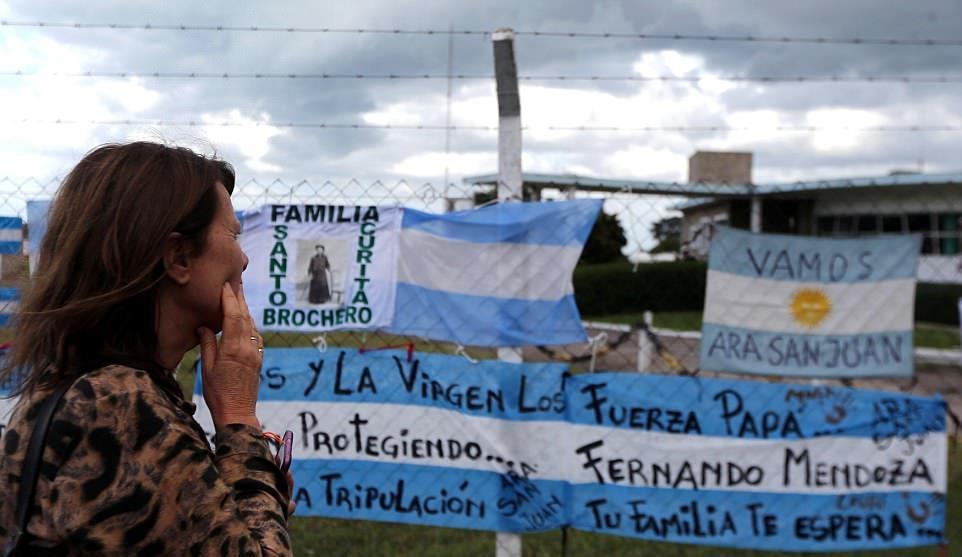BUENOS AIRES, Nov. 23 (Xinhua) -- Argentina's Navy (ARA) confirmed Thursday that there was a "singular, abnormal, short, violent and non-nuclear" explosion in the area where the submarine ARA San Juan went missing on Nov. 15 with 44 crew members on board.
The explosion had been detected by the U.S. Navy and an international nuclear test-ban monitoring organization in Austria, which has a network of hydroacoustic seismic stations, ARA spokesman Enrique Balbi told reporters here.
The sources said a "hydroacoustic anomaly" was produced near the submarine's last known location just three hours after the vessel lost all contact.
"According to this report, there was an explosion... We don't know what caused an explosion of these characteristics at this site on this date," Balbi said, describing the "anomaly" as being "singular, short, violent and non-nuclear."
The ARA San Juan, a TR-1700 submarine manufactured in Germany, was commissioned by the ARA in 1985 and most recently refitted at a cost of 12 million U.S. dollars in 2014, during which the vessel was cut in half and had its engines and batteries replaced.
According to the ARA and some experts, the submarine could only provide its crew with a steady supply of oxygen for 7-10 days if it's in good condition. The submarine's captain had reported a battery failure before it vanished.
However, Balbi said that "the malfunction could not be associated to the disappearance. This had been notified earlier, the submarine had a problem in its electrical power equipment."
He also denounced rumors that the submarine had been attacked, saying there was no evidence of an attack.
The submarine was originally scheduled to arrive Monday at the Mar del Plata Navy Base, about 250 miles (400 km) southeast of Buenos Aires, after carrying out a surveillance mission near the southern city of Puerto Madryn in Argentina's exclusive economic zone.
It disappeared in the San Jorge Gulf area, 240 nautical miles (432 km) southeast of the Valdes peninsula, in the South Atlantic.
Balbi said that "we are continuing to look for the submarine and the 44 crewmen. Until now, there is no certainty or evidence, the search will continue."
The operation, which involves 4,000 men and is led by Argentine Defence Minister Oscar Aguad, has seen the participation of vessels and aircraft from Brazil, Britain, Canada, Chile, Colombia, France, Germany, Norway, Peru, Russia, Spain, Uruguay and the United States.
Straddling the edge of continental shelf, the search operation is conducted with widely varying ocean depths, some even at a depth of up to 3,000 meters, where experts say the submarine could not have supported the pressures.
"If a submarine goes below its crush-depth, it would implode, it would just collapse," which would "sound like a very, very big explosion to any listening device," said James Patton, a retired Navy captain.
Argentine Naval spokesperson Captain Gabriel Galeazzi said on Tuesday that it was "an arduous task, it is not simple and takes time. We must have patience, the area is being covered" with a search range of over 480,000 square km, which is roughly the size of Spain.
Speaking at a forum on open government in Buenos Aires, Argentine President Mauricio Macri said: "In these difficult hours, I did not want to start without sending once again all my support to the families of the crew of the ARA San Juan submarine."





